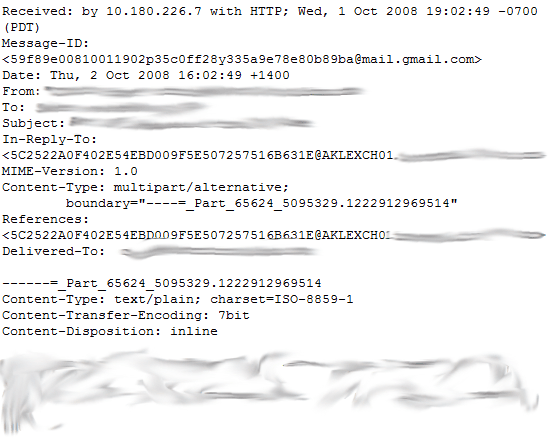Email Content Transfer Encoding
Content transfer encoding defines encoding methods for transforming binary email message data into the US-ASCII plain text format. This transformation allows the message to travel through older SMTP messaging servers that only support messages in US-ASCII text. Content transfer encoding is defined in. Hi all Myself found the Solution the problem is i need to set the Content-Transfer-Encoding to 7bit this is achived by adding it into the header. It is used to transmit attachments via email over the Simple Mail Transfer Protocol (SMTP). Other examples of Base64 encoding are Radix-64 and YUI's Y64. Encoding data in Base64 results in it taking up roughly 33% more space than the original data. MIME Base64 encoding is the most common, and is based on the RFC 1420 specification.
Example of an e-mail header
Below is an example of an e-mail header with an explanation about each of the major portions of the header and how to understand that data.
NoteThe following example is only an example and may not be the same as how your e-mail program or online service displays an e-mail header.
Apparently-To, Delivered-To, and To: sections
The lines that begin with Delivered-To and To: contain the e-mail address of who is being sent the e-mail.
From: section
The line that begins with From: is who sent the e-mail.
In-Reply-To: section
Although not displayed on the above example (even though the subject contains Re:) the lines beginning with In-Reply-To: contains the message id of what e-mail is being used for reply. Not all e-mail servers will use this feature.
Cc: section
The line beginning with Cc: contains any e-mail address that was sent a carbon copy of the message.
Bcc: section
Lines that begin with Bcc: is any BCC (blind carbon copy) e-mails that were also sent the e-mail. Although not all e-mail programs display this information because of privacy concerns, there are several programs that will.
Subject: section
The Subject: line contains the subject of the e-mail.
Return-Path: section
The line beginning with Return-Path: is what e-mail should be used if an error is encountered while the e-mail is being sent.
Received: section
Lines beginning with Received: contain each of the mail servers that the e-mail has passed through to get to your Inbox. This section is useful in troubleshooting e-mails that are not getting to the destination because it contains the e-mail server, IP address, the date sent, and other useful information.
The Received line is also useful as an indication of who sent the e-mail. Often the first Received: (the lowest on the list) is the mail server that originated the e-mail. However, it is also easy for spammers to create a fake (spoof) received making it appear that a mail passed through their server and that they are not the origin of the e-mail.
Email Attachment Content-transfer-encoding Base64
Message-ID: section
The line starting with Message-ID: is the assignment given to the e-mail message from the first e-mail server.

Lines beginning with 'X-:' in the e-mail header
Lines beginning with X- are extra data that are not in any standard and used by mail servers and e-mail clients to provide information for sending e-mail. Below is a short list of some common X- lines you may see while viewing an e-mail header.

- X-Complaints-To: - Where to direct your complaints you have about an e-mail you received.
- X-Confirm-Reading-To: - Create an automatic response for read messages.
- X-Errors-To: The address to send an e-mail to for any errors encountered.
- X-Mailer: - Program used to send the e-mail.
- X-PMFLAGS: - Additional information used with Pegasus Mail.
- X-Priority: - Priority of e-mail being sent.
- X-Sender: - Additional information about the sender of the e-mail.
- X-Spam-zzz: - Where zzz is any number of different spam tags relating to the Spam filter on the e-mail server. Some of these include: Checker-Version, Level, Report, and Status.
- X-UIDL: - Used with e-mails distributed over POP.
Smtp Encoding
Content-Type, Content-Transfer-Encoding, MIME-version section
7bit Encoding
Used by MIME to know how to understand and display the e-mail in the e-mail program.
Additional information
- See the e-mail definitions for further information and related links.